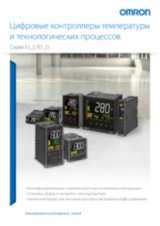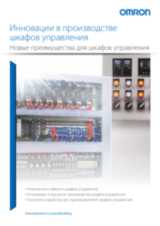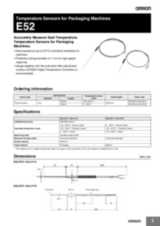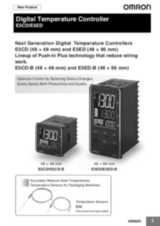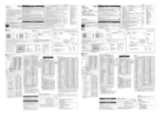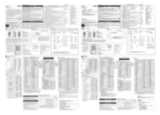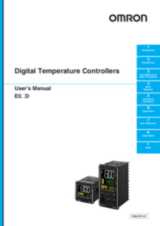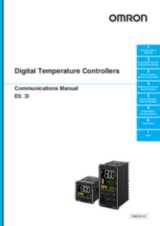E5_D
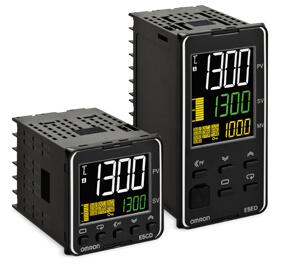
Новое поколение регуляторов
E5_D — новое поколение регуляторов, разработанных для оптимального автоматического регулирования температуры без участия человека. Искусственный интеллект полностью автоматизирует стандартную настройку,ранее выполнявшуюся человеком.
- Адаптивное управление — автоматическая оптимизация параметров регулирования при изменении параметров процесса
- Специальные функции для улучшения работы упаковочных машин иэкструдеров с водяным охлаждением (для пластмасс)
- Извлекаемая внутренняя часть для повышения удобства обслуживания
- Основные характеристики аналогичны серии E5_C
Адаптивный алгоритм управления
При использовании стандартных контроллеров температуры помимо очень долгого периода определения исходных настроек PID-регулирования при запуске, также очень сложно определить оптимальные настройки без многолетнего опыта работы в данной области. Поэтому компания Omron разработала серию E5_D с "технологией адаптивного управления". Данная технология автоматически определяет изменения в контролируемом процессе и соответствующим образом адаптирует настройки PID.
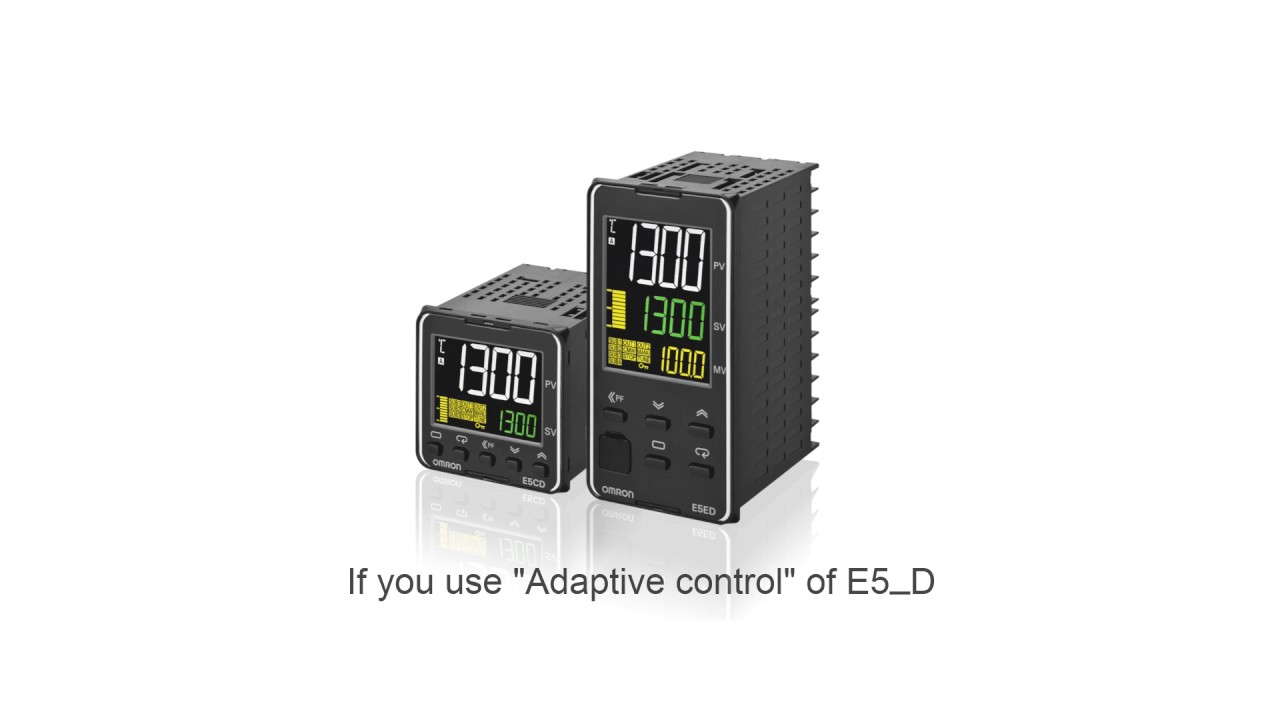
-
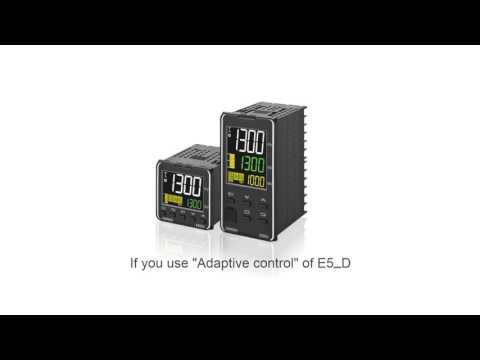
E5_D Temperature contoller: Adaptive control algorithm
With standard temperature controllers, not only do you need a long time to define initial start-up PID settings, but it is also really challenging to make the optimal adjustments without having many years of experience in this area. That’s why Omron developed the E5_D Series with “adaptive control technology”. This automatically detects changes in the process under control and adapts the PID accordingly.
01:26
Превосходный контроль температуры пайки для упаковочных машин
На традиционных упаковочных машинах датчики температуры часто располагаются слишком далеко от поверхности пайки нагревательной планки. Это приводит к различию температуры поверхности пайки и фактически контролируемой температуры. Эта разница температур и происходящие из-за нее ошибки возрастают при увеличении скорости упаковки, а также при использовании более тонких упаковочных материалов или изменении температуры окружающей среды.
Благодаря серии E5_D данная проблема разрешается следующим образом:
- перемещение датчика ближе к поверхности пайки - благодаря специальным моделям датчиков для быстрого определения
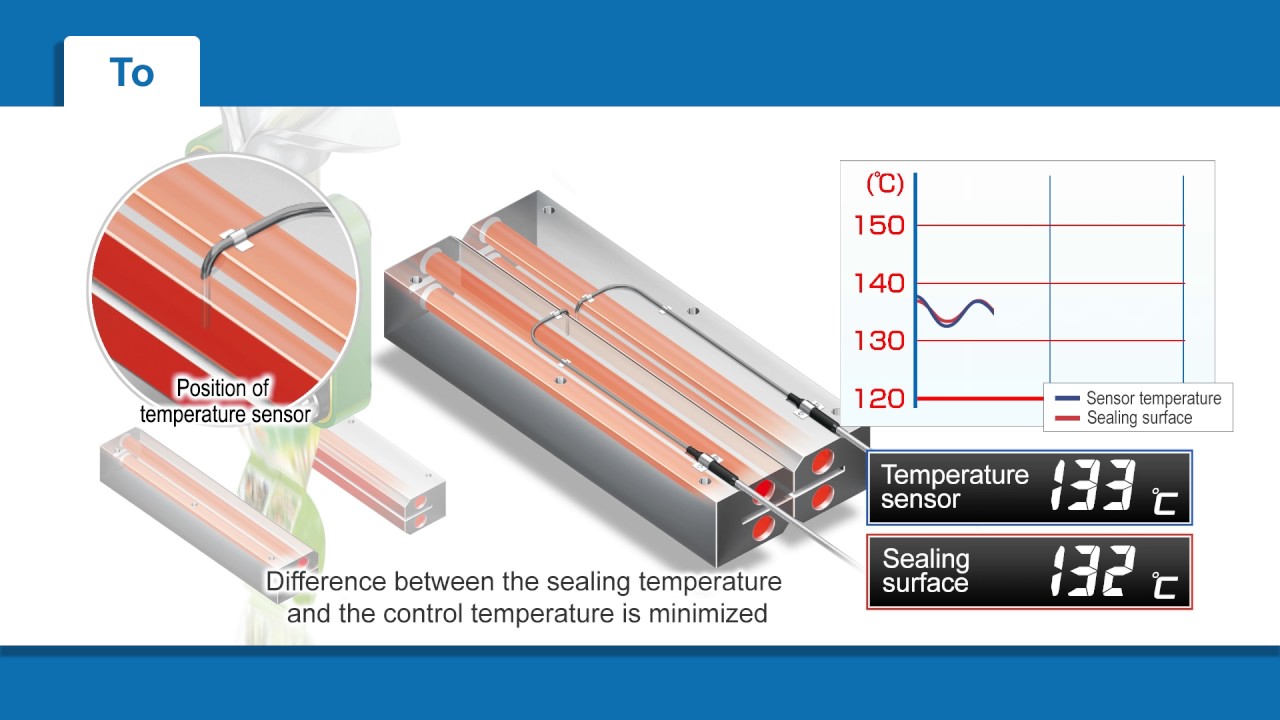
-
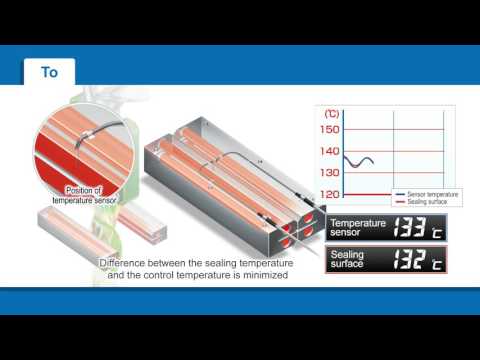
E5_D TC: Perfect sealing temperature control for packaging machines (1)
On a conventional sealing machine temperature sensors can often be located too far away from the sealing surface of the heating bar. This causes a difference between the temperature of the sealing surface and the temperature that was actually being controlled. This temperature difference and resulting sealing failures, increase as the packaging speed increases and also in correlation with thinner packaging materials or changing in ambient temperature. Thanks to the E5_D series, this issue is solved with the following approach: • bringing sensor closer to the sealing surface - thanks to special temperature sensor models for faster detection • adopting special algorithms (automatic filter adjustment function) built-in E5_D, specifically developed to suppress temperature variations. The result is a better sealing quality of the packages.
01:25
- использование специальных алгоритмов (функция автоматической регулировки фильтров), встроенных в E5_D и специально разработанных для подавления отклонений температуры. В результате достигается лучшее качество запаивания упаковок.
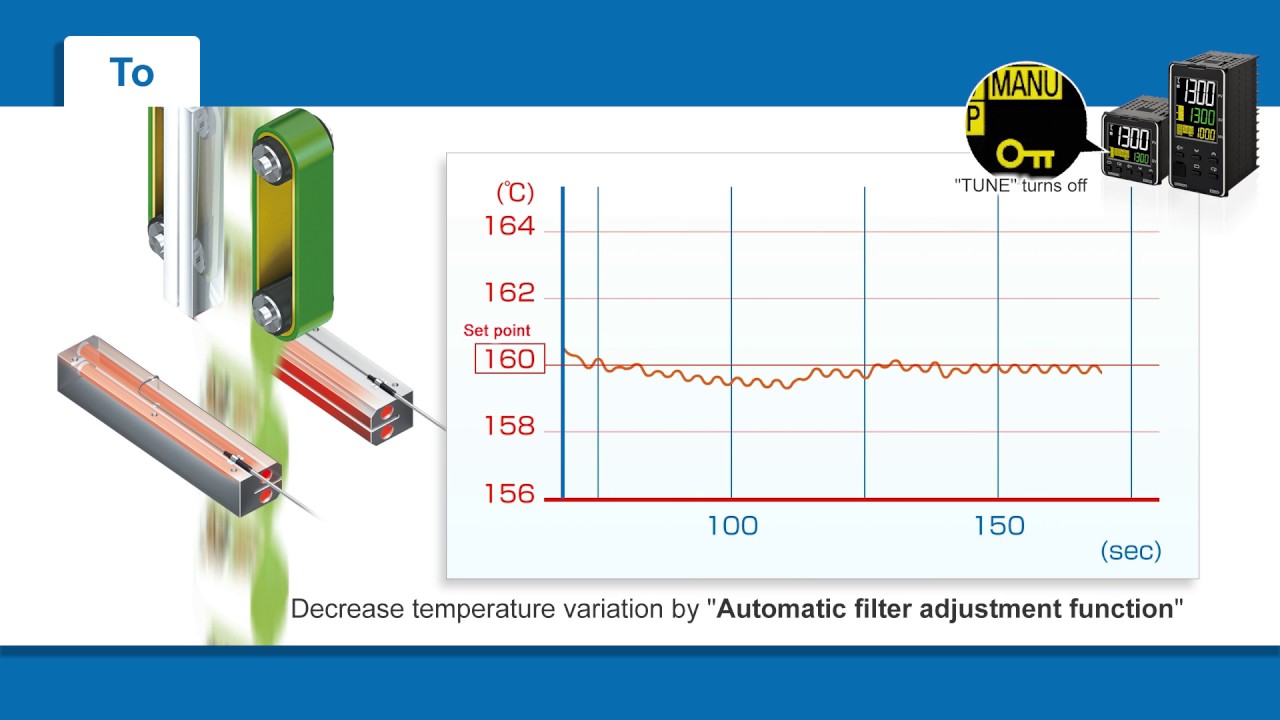
-
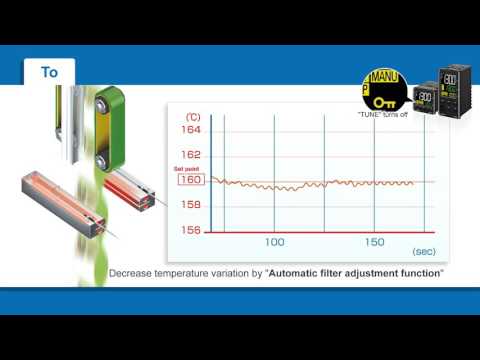
E5_D: Perfect sealing temperature control for packaging machines (2)
On a conventional sealing machine temperature sensors can often be located too far away from the sealing surface of the heating bar. This causes a difference between the temperature of the sealing surface and the temperature that was actually being controlled. This temperature difference and resulting sealing failures, increase as the packaging speed increases and also in correlation with thinner packaging materials or changing in ambient temperature. Thanks to the E5_D series, this issue is solved with the following approach: • bringing sensor closer to the sealing surface - thanks to special temperature sensor models for faster detection • adopting special algorithms (automatic filter adjustment function) built-in E5_D, specifically developed to suppress temperature variations. The result is a better sealing quality of the packages.
01:03
Регулировка водяного охлаждения
На экструзионных формовочных машинах с водяным охлаждением увеличение скорости приводит к отклонениям температуры из-за воздействия различных факторов, таких как материал компаунда и охлаждающая вода…Для оператора это означает необходимость постоянной подстройки клапана для обеспечения стабильного качества. Однако, в действительности, очень сложно достичь высокой скорости производства с обеспечением должного качества
При использовании E5_D функция регулировки водяного охлаждения подавляет отклонения температуры до минимума и повышает скорость производства, одновременно с этим поддерживая требуемое качество.
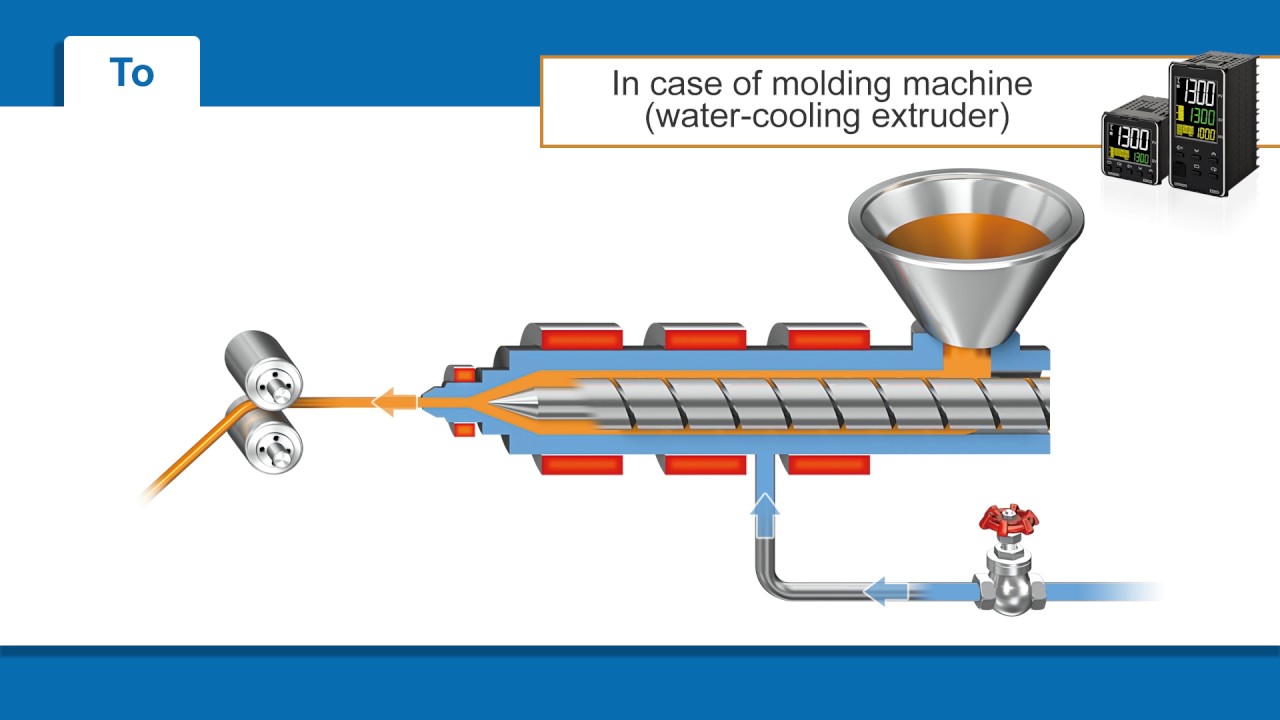
-
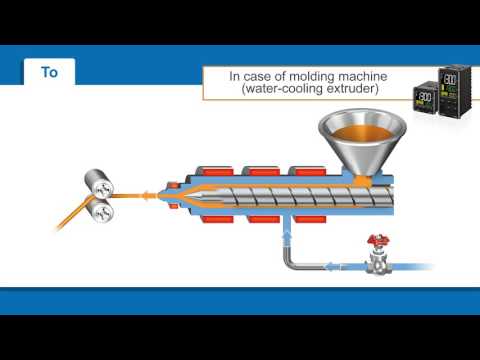
E5_D TC: Temperature variations in molding machines minimized by a new algorithm
On a water-cooled extrusion molding machine, increased speed leads to temperature variations due to various factors such as the materials compounding and cooling water…For human operator that means repeatedly make valve adjustments to stabilize the quality. However It is really difficult to achieve high speed production while also maintaining the quality… With the E5_D, the water-cooling output adjustment function suppresses the temperature variations to a minimum and raises the production capacity with the quality maintained
01:33
Ordering information
E5CD (48 × 48 mm)
Note: Other models with HB/HS alarm for 1-phase heaters, 2 EV inputs are available on request. Please contact the local sales office for special request.
E5ED (48 × 96 mm)
Note: Other models with 2 control outputs or with different kind of option combination are available on request. Please contact the local sales office for special request.
E5_D optional tools
Accessories
Temperature sensors
Specifications
E5CD/E5ED
| |||||
| Indication accuracy1 |
| ||||
| SPST-NO, 250 VAC, 3 A (resistive load), electrical life: 100,000 operations, minimum applicable load: 5 V, 10 mA (reference value) | SPST-NO, 250 VAC, 5 A (resistive load), electrical life: 100,000 operations, minimum applicable load: 5 V, 10 mA (reference value) | ||||
| Output voltage: 12 VDC ± 20% (PNP), max. load current: 21 mA, with short-circuit protection circuit | Output voltage: 12 VDC ± 20% (PNP), max. load current: 40 mA, with short-circuit protection circuit (The maximum load current is 21 mA for models with two control outputs.) | ||||
| 4 to 20 or 0 to 20 mA DC, Load: 500 Ω max., Resolution: Approx. 10,000 | |||||
| Non-contact input: ON: Residual voltage: 1.5 V max., OFF: Leakage current: 0.1 mA max. | |||||
| Current output: 4 to 20 mA DC, Load: 500 Ω, Resolution: Approx. 10,000 Linear voltage output: 1 to 5 V DC, Load: 1 kΩ min., Resolution: Approx. 10,000 | |||||
| 11-segment digital display, individual indicators, and bar display | 11-segment digital display, individual indicators, and bar display Character height: PV: 18.0 mm, SV: 11.0 mm, MV: 7.8 mm Three displays Contents: PV/SV/MV, PV/SV/Multi-SP, PV/SV/Remaining soak time, etc. Numbers of digits: 4 digits each for PV, SV, and MV displays | ||||
| Multi SP3 | Up to eight set points (SP0 to SP7) can be saved and selected using the event inputs, key operations, or serial communications. | ||||
| Adaptive control, automatic filter adjustment, water-cooling output adjustment, indication data (power ON time monitor, ambient temperature monitor, and control output ON/OFF count monitors), parameter masking, operation after power ON, manual output, heating/cooling control, loop burnout alarm, SP ramp, other alarm functions, heater burnout (HB) alarm (including SSR failure (HS) alarm), 40% AT, 100% AT, MV limiter, input digital filter, robust tuning, PV input shift, run/stop, protection functions, extraction of square root, MV change rate limit, logic operations, temperature status display, simple programming, moving average of input value, and display brightness setting | |||||
| −10 to 55°C (with no condensation or icing), | |||||
| Overvoltage category II, Pollution Degree 2 (EN/IEC/UL 61010-1) | |||||
USB communication cable E58-CIFQ2
2. The indication accuracy of K thermocouples in the -200 to 1,300°C range, T and N thermocouples at a temperature of -100°C max., and U and L thermocouples at any temperatures is ±2°C ±1 digit max. The indication accuracy of the B thermocouple at a temperature of 400°C max. is not specified. The indication accuracy of B thermocouples at a temperature of 400 to 800°C is ±3°C max. The indication accuracy of the R and S thermocouples at a temperature of 200°C max. is ±3°C ±1 digit max. The indication accuracy of C/W thermocouples is (±0.3% of PV or ±3°C, whichever is greater) ±1 digit max. The indication accuracy of PL II thermocouples is (±0.3% of PV or ±2°C, whichever is greater) ±1 digit max.
2. The indication accuracy of K thermocouples in the -200 to 1,300°C range, T and N thermocouples at a temperature of -100°C max., and U and L thermocouples at any temperatures is ±2°C ±1 digit max. The indication accuracy of the B thermocouple at a temperature of 400°C max. is not specified. The indication accuracy of B thermocouples at a temperature of 400 to 800°C is ±3°C max. The indication accuracy of the R and S thermocouples at a temperature of 200°C max. is ±3°C ±1 digit max. The indication accuracy of C/W thermocouples is (±0.3% of PV or ±3°C, whichever is greater) ±1 digit max. The indication accuracy of PL II thermocouples is (±0.3% of PV or ±2°C, whichever is greater) ±1 digit max.

